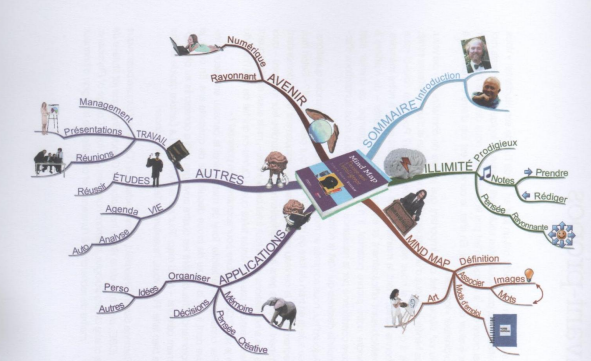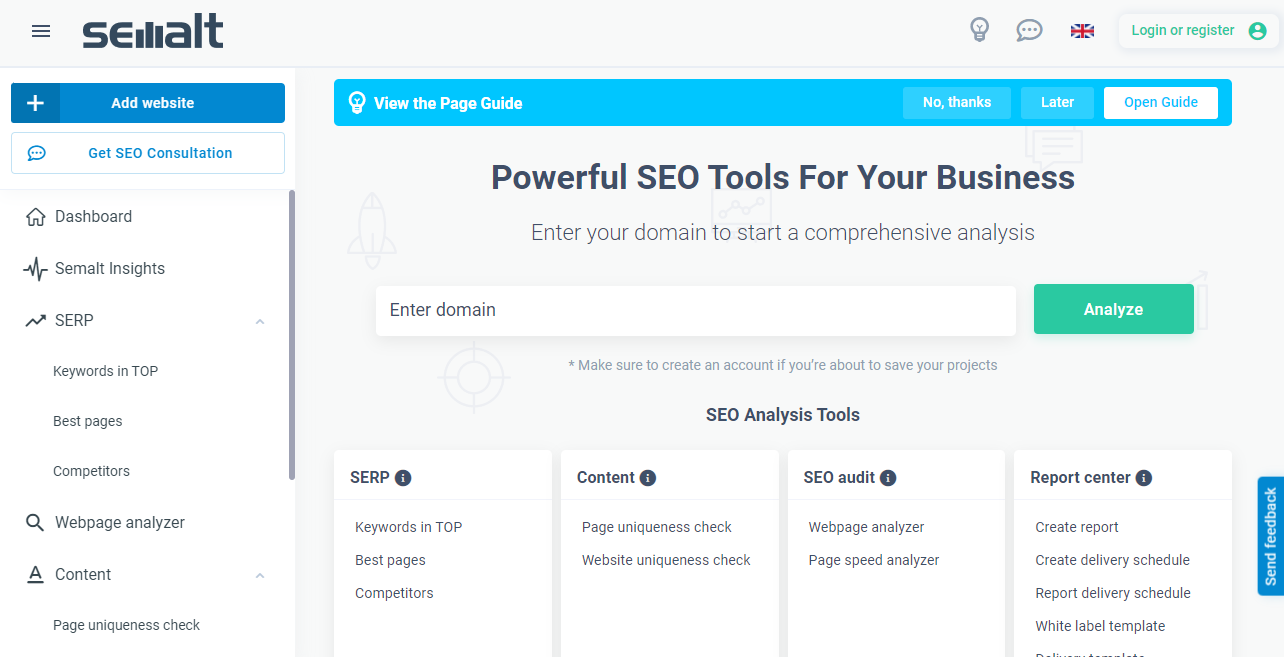Semalt Explains What Semantic SEO Is

Google and other search engines are referrers that many people use to research various topics.
Indeed, even if the users of these search engines do not use the right keywords to perform their search, that is, even if they make mistakes or even if they do not have a clear idea of what they are looking for yet, these search engines help them find exactly what they are looking for.
This being the case, as a website owner, you need to do semantic SEO for your site so that it can provide a meaningful answer to your visitors' searches. This way, Google or other search engines will present your pages on their first page for every search click that is related to your keywords.
So, how can you create SEO for humans and not for bots? Follow this comprehensive guide to stay on track with semantic SEO. Plus, for a successful SEO in a short period of time, Semalt offers you a complete service with its best DSD tool.
What is semantic search engine optimization?

Semantic SEO is the process of providing relevant content that creates value for web users. As the word "semantic" suggests, the content must have meaning.
On the other hand, ten years ago, in the 2000s, a website could appear at the top of the search results if it only contained a bunch of high authority links and a sufficiently long text full of keywords. At that time, it was very easy to manipulate the search engines and this was the cause of many irrelevant search results for users.
Google Hummingbird & RankBrain: the "human" updates

Keyword stuffing, junk links, and other forms of search algorithm manipulation were a huge problem for users and for Google itself. These techniques rewarded less suitable sites (pages that didn't provide what users were actually looking for).
That being the case, Google chose to introduce a number of updates that should remedy the problem.
The first was The Knowledge Graph of 2012. This is an intelligent model that evaluates Google content based on the connections and relationships that exist between information on the Internet.
In 2013, Google then introduced Hummingbird. This was the first update where the algorithm was called semantic. It placed more emphasis on everyday natural language, context, and the very meaning of a search. It was followed by RankBrain in 2015.
Here, semantic SEO became an official part of Google's 200+ factors on how the algorithm selects which pages get the top positions in search results.
Why is this important?
Google prioritizes content that meets search intent. Therefore, if you want to do well in SEO, you need to know how to produce valuable content or a useful service.
In addition, you need to function as an expert in order to increase your chances of being ranked in Google's results. This means that before writing your content, you need to think more about how people use or find your website. It's no longer about satisfying a machine or Google's robots, but rather about thinking in human terms.
It's about both content and form, which is how you present your content. So you also need to make sure that your site, technically speaking, is properly configured and offers a good user experience. What is desired in terms of content and form depends a lot on the individual search.
If you are having trouble adjusting to this new Google way of working, refer to the professional services offered by Semalt. Indeed, thanks to its best DSD SEO tool, you can be sure to reach the best positions on search engines.
4 tips for semantic referencing
Here are four tips to help you integrate semantic SEO into your website or content.
Find the intent behind a search.
Search intent is the reason why people search for something on Google. Therefore, it is one of the most important concepts, both when you want to create content, but also when you select keywords for your keyword analysis.
Indeed, search intent can be roughly divided into four categories:
- Information
- Navigation
- Business Clarification
- Transaction
1. Transactional searches are about buying and selling
Google even understands non-keyword searches with direct action very well. If you type "summer dress" into Google, you will mainly be directed to online shops where you can buy women's clothing. This is because most people who perform this search are interested in buying summer dresses, rather than, for example, the history of the summer dress.
However, if you have done several searches beforehand about material choices, cultural and historical meanings behind specific garments or clothing cuts; the algorithm can sometimes read your interest and thus suggest a search with information about summer dresses.
On the other hand, informative searches are about knowledge. It is often about getting answers to questions. Here, you will most often see step-by-step guides, articles, and other content that explains something about the topic the keyword is about.
From then on, informative searches can be used commercially.
As a result, commercial clarification is a hybrid between transactional and informative searches. It often concerns users who know they need to buy a product, service, or experience but don't yet know which provider is best.
2. Think in terms of topics - not just keywords
Semantic SEO also means that you don't have to think only about keywords but also about topics.
This is because your keyword is not necessarily included in all searches that relate to the same search intent. This means that when it comes to producing content for your chosen keyword, you also need to think about what it is really about.
Nowadays, many pages can rank well on keywords that otherwise never appear in the title of the page itself. That's because Google has deemed that they are really the same thing.
Therefore, thinking about topics makes it easier for you to fill your page with accuracy on what your users are looking for.
In addition, you can also create your page in such a way that it can easily and clearly form an overview of a number of subtopics under a common topic page. This approach also leads to more in-depth and useful content, which is ultimately good for the user.
3. Be specific
This advice depends largely on your target audience. If you want to do semantic SEO, you should always keep this in mind: be precise in your word choice and make sure your text is easy to read.
This is because most Google searches are either done in everyday language or by people trying to think like a machine because they are looking for something specific.
However, as Google's algorithm gets wiser, these latter searches are increasingly disappearing.
But, when it comes to creating your content, it's still important that you use the same words as your target audience. For example, if you're writing to a professional rider, it's still important that you talk about "docking", rather than "the things you use to steer your horse during the discipline of show jumping". By doing this, the algorithm will have a good understanding of what you are talking about, as it has a better semantic understanding.
On the other hand, it can also assess that you are not formulating yourself correctly to the reader. Indeed, if your readers know something about the topic, they may also be annoyed that you are not using the terms correctly. This can cause them to leave the page and thus increase your bounce rate.
4. Integrate your content into your semantic cocoon

The semantic cocoon is a concept based on the architecture of your site, offering you a powerful and relevant tree structure for your references.
Indeed, your semantic cocoon is composed of an artificial neural network that will extract the major complementary themes, i.e., the major semantic concepts that revolve around your main content.
The objective is to support the main page by proposing other content adapted to the user's request. The semantic cocoon will be proposed to you in the form of a Treemap; which will propose a whole bunch of themes/topics/questions that revolve around your main query. This new content will bring support to the theme you are addressing by making it more optimal, more legitimate in the eyes of Google.
In addition, like the semantic cocoon, there are other methods of content structure in SEO, including the concept of the thematic cluster. Indeed, the optimization strategy of the Thematic Cluster is based on topics rather than on keywords because the topic is at the center of the content.
Basically, this thematic cluster method offers web editors a relevant and efficient strategy for content creation, organization, and promotion that is better adapted to the search for information by website visitors. By combining pillar pages, the thematic cluster will allow you to create a centralized content bank that explores all facets of a topic by dividing it into autonomous segments.
Conclusion
Semantic referencing represents the optimization of your website so that it can provide a significant response to your visitors' searches. By doing semantic SEO, it means that you are optimizing your site for the human needs of the searcher, not just the search engine.
In addition, semantic SEO is based on everyday language and thinking beyond keywords. This became possible after the Google Hummingbird (2013) and RankBrain (2015) updates.
Hence, follow these tips listed in this content to do a good semantic SEO on your site and thus generate a lot of traffic to your site.
Moreover, the SEO Personal Dashboard is a tool that is perfectly adapted to the realities of the market and designed to help you improve what matters most to you: your positioning on Google. With this tool, your site will land on the first page of search engines in no time.
